VN-ese Waltz Book 2: VN-ese Whirls
By Mento 1 Comments
Felicitations, all lovers of books (as long as they have pictures), to another mini-series of VN-ese Waltz: a feature I did a couple years back wherein I checked out a bunch of notable visual novels. Since we're right near the end of Novelmber and we've all got GOTY to be concerning ourselves with before too long, the timing seemed prudent to wax lexical about a whole new host of barely interactive beauties. (Boy, that's a weird three-word phrase without context.) Needless to say, I've been slowly piling up more of these since I ended the previous season back in December 2021 and have aggregated a smattering of mini-reviews here as an anthology of sorts.
Paranormasight: The Seven Mysteries of Honjo
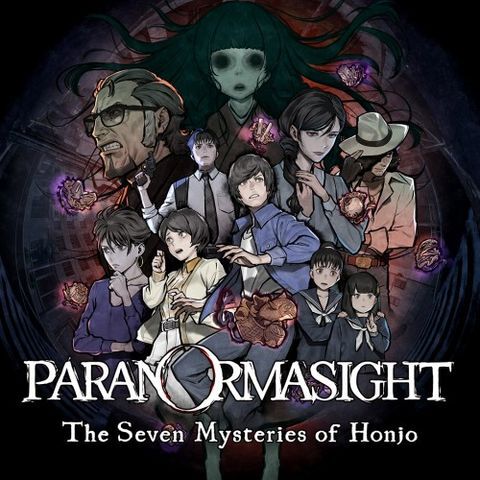
- Xeen / Square Enix
- Completed 08/11
The first book off the figurative shelf would be Paranormasight, which coincidentally is about as contemporary as this feature (or any of my features) intends to get given it was released a mere seven months ago. Paranormasight was published by Square Enix (hence why I can't "Indie Game of the Week" this one, even for as much as I tend to stretch the definition of Indie on the reg) and developed by a frequent collaborator of theirs named Xeen, presumably unrelated to Might and Magic IV and V (or maybe not; those games were popular enough in Japan), who had previously worked with SE on the Trials of Mana remake and Final Fantasy XV and several others. Paranormasight is a horror-themed game (only a month late there) that concerns a series of folk legends known as the Seven Mysteries of Honjo: one night, all seven (actually nine, but a character explains that "seven mysteries" rolls off the tongue better) of the vengeful spirits that inspired these mysteries choose "curse bearers" that are able to kill others with curses related to how the spirits died. Some real gnarly ones too, like getting disemboweled in the dark. The goal is collect enough "soul dregs" from these spectral executions to enact the Rite of Resurrection, a ritual capable of bringing anyone back from the world of the dead. Naturally, these curse bearers are all those with a strong desire to revive someone, and some are even capable of going to any length to do so. The game follows the aimless young man Shogo Okiie at first, then eventually opens up to three concurrent stories regarding the grieving mother Harue Shigima, the hardboiled cop Tetsuo Tsutsumi, and the feisty schoolgirl Yakko Sakazaki (whom I'm guessing is also looking to escape the Warner Bros. water tower).
Paranormasight is a true visual novel experience, at least how I define it: one that takes into account the player's omniscient ability to switch between timelines and nodes at will and work from information gathered in other (usually fatal) routes to intuit a better outcome. All four (later five) protagonists have stories that weave in and out of the others', each pursuing their own goals with a gaggle of secondary characters in tow, and the game plays around with a deepening mystery that takes multiple perspectives to piece together in its entirety. It's not dissimilar to Raging Loop, which I played as part of the last season of this VN-focused feature, as both games are apt examples of how the supernatural horror genre is a perfect thematic match for a timeline-hopping whodunnit thriller with all sorts of rule-breaking involved (including, often, the laws of causality).
Though it's rarely important to the story, the game is deeply rooted in a time and place: specifically, the Tokyo-adjacent city of Sumida in the 1980s. Usually when horror media does this period piece business it's to write around the snag of everyone spoiling the villains' plans by using their smartphones to call for help (and that is a factor here too) but I think here it's more in service of giving the game a distinctive aesthetic. When I say aesthetic, I don't just mean the period-specific fashion of the characters but a sort of grainy CRT filter over everything. (And I guess when I say distinctive, I'm willfully ignoring all the other horror-related stuff set in the 1980s that has come out in the past decade, which perhaps outnumbers the amount set in modern times.)
Anyway, this game's fun because it keenly understands (and thus knows how to subvert) the conventions of the visual novel format and has a few curveballs here and there about how the player might proceed. For example, a hostile curse bearer whose curses are audio-based might not sound like something your protagonist could easily evade, unless you start tinkering with the audio settings in the options menu first. You also have to pay attention to what you're told, as there's some tougher reading comprehension puzzles towards the end. Fortunately, the game has a database of its characters and terminology to remind you of any proper nouns being tossed around: the file system in particular works like the glossaries of the Science Adventure series, practically doubling as a collectible hunt of its own. Games like this and Raging Loop and 428: Shibuya Scramble, which all take advantage of the typical visual novel system of navigating a branching timeline for the full story to create some intriguing meta puzzles, are definitely my favorite variety of VN and I hope to encounter more of them in the future. (Recommendations welcome!)
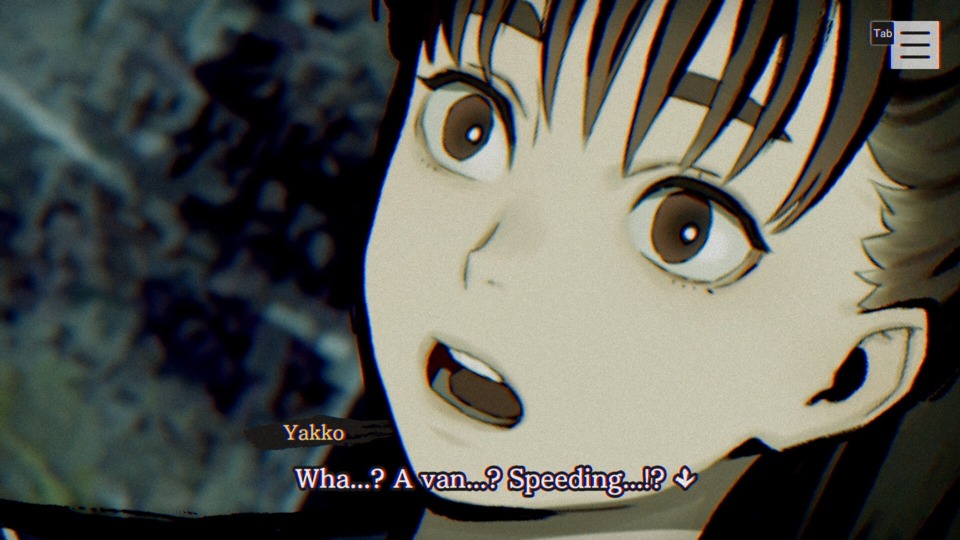
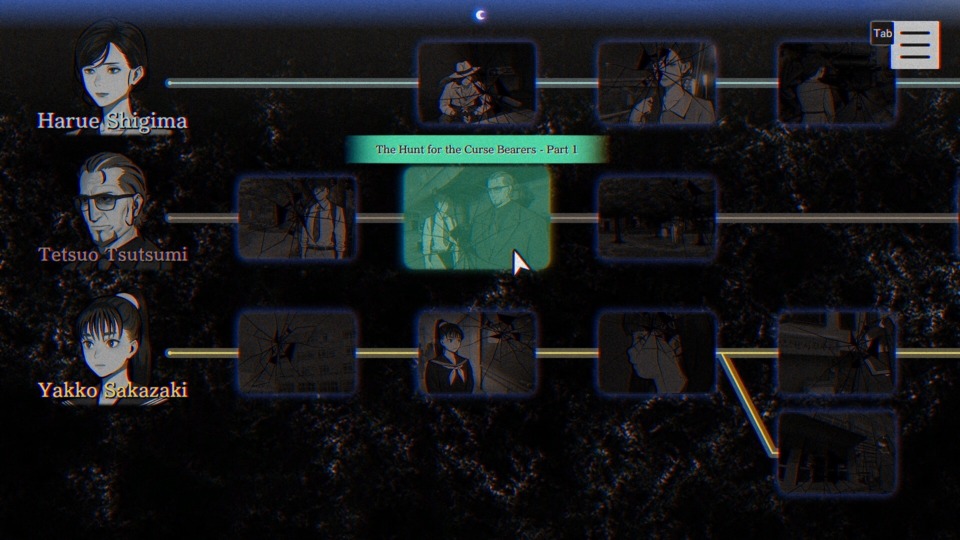
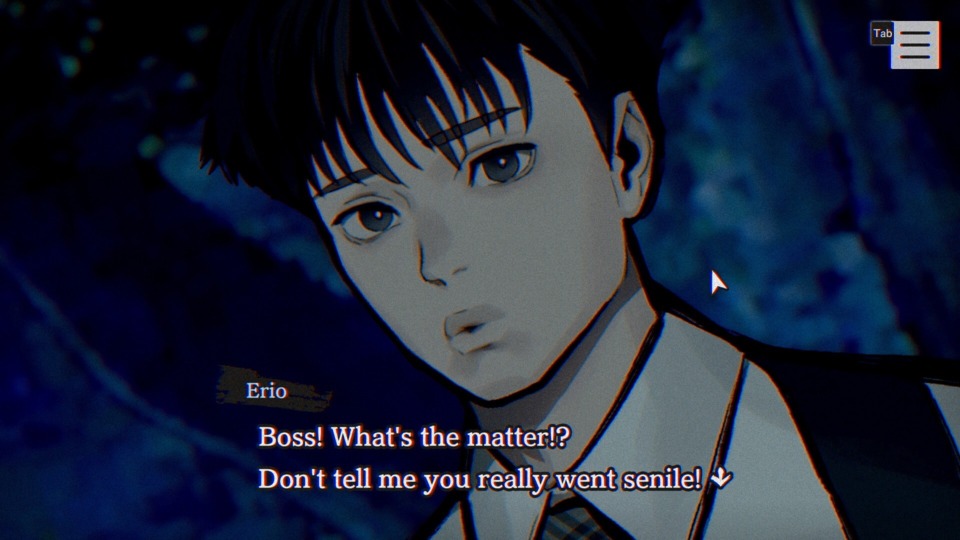
Quarantine Circular
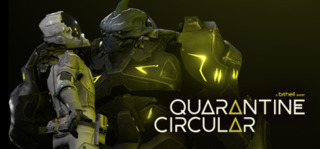
- Bithell Games / Bithell Games
- Completed 10/11
I guess I'll include this but I don't have much more to say that I didn't already cover in this Indie Game of the Week entry. Complete coincidence that I left a VN in the IGotW rotation; I actually plan those things out a month in advance. It's a very Star Trek-like approach to a sci-fi story, couching the otherworldly premise of negotiating with an advanced and potentially dangerous alien being for a solution to a deadly epidemic with a certain amount of empathetic groundedness and measured caution. The essence of humanity (for better and worse) is definitely at the core of the piece.
Corpse Factory
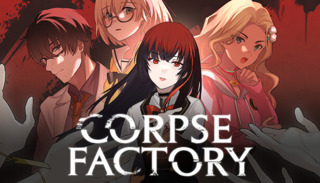
- River Crow Studio / River Crow Studio
- Completed 12/11
I'll admit it, the first time I saw the title of this game I thought it was a Corpse Party spin-off of some kind. The second time I just imagined Paul Ryckert yelling "Corpse Factory!" at bemused passing drivers. I think the internet has broken me. Corpse Factory is neither of those, you might be surprised to learn, but is instead a suspenseful psychological horror crime thriller set in Tokyo about a website that will kill the person whose details are entered: a photo and a phone number. Said victim soon receives a photo of their own death, time-stamped for the near future, and then either suicides out of despair or is disposed of by an unknown entity. After a prologue chapter that demonstrates this process in action, the game then switches to the main protagonist: Noriko Kurosawa. Noriko is deeply disturbed. On anxiety meds, suffering an eating disorder, pining for an unrequited love since highschool, and surrounded at her job with people she doesn't like, she's slowly unravelling from mental illness, malnutrition, and loneliness. Yet, for as sympathetic a character as the game sets her up to be, she eventually proves to be anything but. A deranged, sadistic anti-hero with delusions of grandeur, but a compelling character to follow all the same. It's like the game molds its initially likeable protagonists' suffering through a whole host of bad decisions, as if to challenge our continued tacit support for them almost due entirely to them being a viewpoint character we are asked to empathize with. Maybe it's just more fun to root for the bad guys sometimes, especially if we understand the course that brought them down the villain path.
Man, is this game bleak though. Just damaged people damaging others in a vicious cycle. The supernatural angle dissipates almost immediately (or does it?) once you realize what's going on, and then it simply becomes a character study on a person disintegrating in real-time, switching perspectives as the ball their psychosis got rolling continues tumbling out of their or anyone else's control. It's also a riveting read as a result, an ongoing trainwreck you can't look away from, with about as high a bodycount. Some aspects of it reminded me of Satoshi Kon's Perfect Blue: specifically, when your viewpoint character becomes increasingly unreliable and paranoid as their mind disintegrates from stress, how much can you believe in what you're experiencing from their perspective? What's real, what isn't, and to what degree are external forces having an influence? Just know beforehand that this game wallows in its misery porn and has set aside a primo spot on the couch for you to join it, and you'll probably find yourself having a ball. A macabre ball, like those rolling skeleton ball traps from Dark Souls III. I will say, though, there's probably more than a few plot holes you have to mentally patch over to appreciate it fully—there are elements of Death Note's cat-and-mouse battle between the supernatural killer and the cops, though with far less effort put into establishing how the former is able to stay one step ahead of the latter.
As a visual novel, it's about as traditional as they come. Notice I said that Paranormasight felt like a "true" visual novel to me, because as someone with a game design background I'm more interested in how the medium can create unique gameplay scenarios that are almost puzzle-like in their temporal and deterministic nature. The majority of visual novels aren't that though: they're passive affairs that, at best, offer a few branching decisions that might alter the story in small or significant ways. That's the traditional visual novel experience that Corpse Factory offers, giving you something like a 1,000:1 ratio of lines that you simply read versus those that you decide upon. That's no denigration, however: even if I'm just clicking through dialogue boxes with backgrounds and character portraits moving in and out of frame, it proved deeply compelling on the strength of its potboiler prose alone. I was genuinely terrified for almost every character involved, even if most had invited this misfortune upon themselves, and I practically read half the story through my hands. Fortunately, the game is also voiced by professional VAs throughout, making it as effective an audio book as it is a visual novel. The VAs do great work: Noriko's "Queen of the Dead" superciliousness, office nemesis Tomoe's heightened valley girl approximation of a tactless gyaru, PTSD-suffering best friend Aoi's mousy timidity, morgue technician Kojiro's tired disaffectedness—every voice leans into their character's anime archetype but in a manner where they're able to plumb the deeper emotional waters lying just beneath. Might help the script that there were no localization woes: despite being set in Japan with Japanese characters, the game itself was developed in Australia. Kinda adjacent, I guess.
Many of the visual novels I've read of late have gone this sort of edgy, morbid, grim approach: The House in Fata Morgana, Chaos;Child, Steins;Gate, a few of the smaller VNs I played during this feature from May, and from what little I've seen of a certain upcoming game about crying seagulls (not the pigeon dating simulator, though) this theme's going to continue for a while longer yet. I wonder what it is about the visual novel medium that makes these particular kinds of stories pop that little bit more. Maybe the emotional voice reads and the extra layer of sympathy you build up with characters you're able to see on-screen and emoting? The occasional branching paths in the narrative affording you hope that, in some alternative timeline, these characters don't fall quite so hard or far? (Even though it's likely they just end up suffering in some other manner instead?) Either way, these factors certainly lend themselves to the impact of the drama being woven. Starting to wonder if playing a bunch of these harrowing VNs in a row like this is necessarily good for my own beleagured psyche, especially as winter approaches and with it come colder and darker days. Good thing I've got Pikmin 4 on standby as a cuteness tonic. A "break window in case of bad vibes," sort of deal.
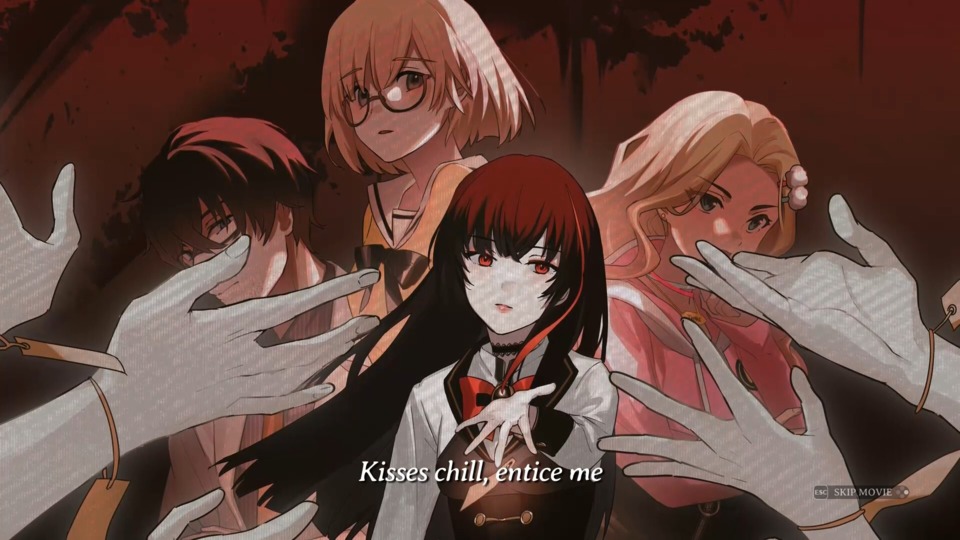
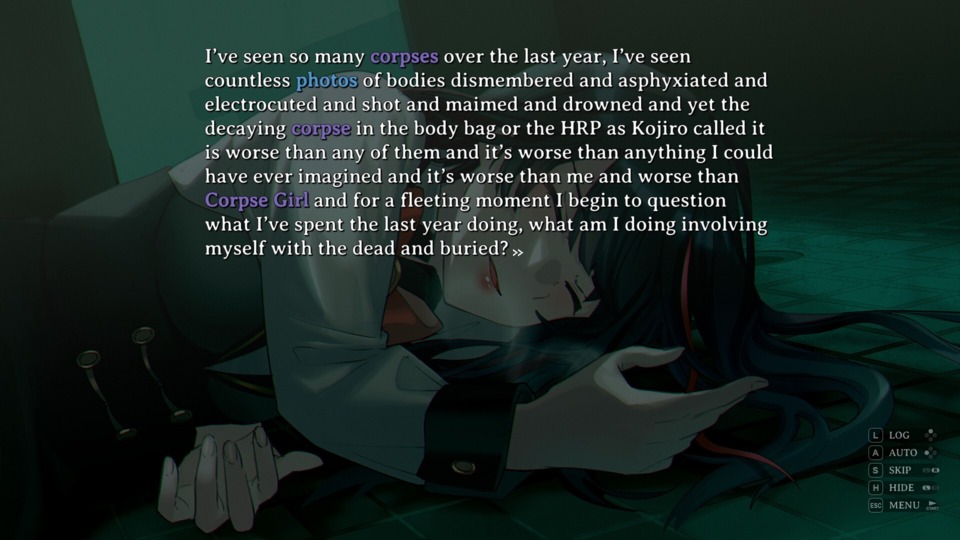
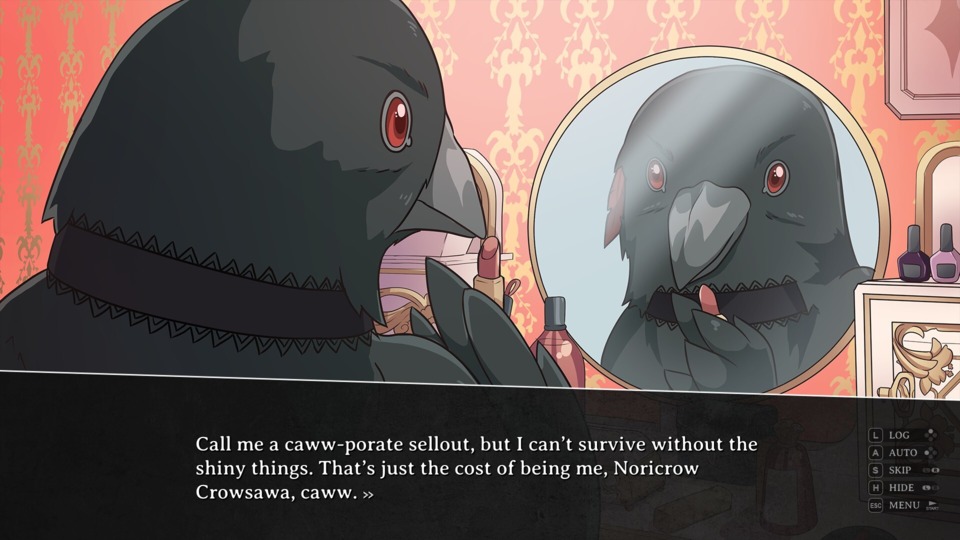
Anyway, back to the murder and sadness grind:
Umineko When They Cry: Question Arcs
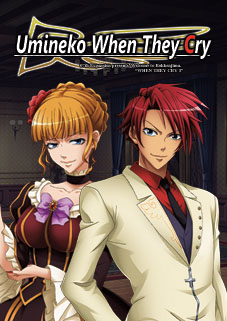
- 07th Expansion / MangaGamer
- Chapter 1 Completed 15/11
- Chapter 2 Completed 16/11
- Chapter 3 Completed 20/11
- Chapter 4 Completed 24/11
So this is a game I've been hearing about forever, along with its disconnected predecessor Higarashi When They Cry, as a murder mystery VN notoriously full of insane twists and wild tangents. Created by 07th Expansion, the English localization collects all eight episodes into two compilations: this would be "Question Arcs," which comprises the first four. Even if it's just half the total story, we're talking a run time well over 40 hours (dependent on your reading speed, I suppose), so I'll probably leave off the other half (named "Answer Arcs," naturally) for a later date so as not to monopolize the rest of this month. Maybe not that much later though, since I imagine I'll forget half the revelations and foreshadowing before too long.
The game concerns the affluent Ushiromiya family who annually gather together on Rokkenjima—an island off the coast of Tokyo owned by their patriarch, Kinzo—in order to catch up with each other and discuss matters important to the clan. At this point it currently consists of Kinzo; his four middle-aged children Krauss, Eva, Rudolf, and Rosa; Krauss's wife Natsuhi and his highschooler daughter Jessica; Eva's husband Hideyoshi and her twentysomething son George; Rudolf's second wife Kyrie and his highschooler son (from his previous wife) Battler; and Rosa's elementary school-aged (and super creepy) daughter Maria. There's also five servants—Genji the butler, Gohda the chef, Kumawara the elderly part-timer, Shannon the maid, and Kanon the apprentice butler—and Kinzo's Wilford Brimley-esque visiting physician Nanjo, looking after Kinzo as the end of his days approaches. Each chapter explores what happens on the island over two nights after it becomes cut off from the world due to a typhoon: the set-up is that the island is actually owned by an all-powerful witch, Beatrice, who murders all eighteen human occupants in a ritualistic manner with hole-gouging stakes (i.e. a full eighteen hole course) over the two nights in order to resurrect herself, affording the humans one chance to survive by having them locate the huge pile of gold Beatrice once lent to Kinzo to help him establish the family's current prestigious wealth. If someone can solve Kinzo's riddle that cryptically reveals the gold's location, they will strike it rich, become the new family head, and everyone will survive; otherwise, Beatrice will collect the "interest" from her investment, which includes everything Kinzo has including the lives of him and his family.
The crux of Umineko When They Cry, and the way it connects each reiteration of this "game", is by having the Battler character vehemently deny Beatrice's existence as a witch capable of magically massacring the Ushiromiya clan. In every murder case, which are invariably impossible closed room murders beloved of whodunnit novels, he pokes enough holes in the premise that the victims were supernaturally executed by presenting arguments that a normal human may have theoretically done it. He's not required to explain who of the eighteen humans was actually the culprit or their motives, just that that an explanation could exist outside of a mystical "a wizard did it" cop-out answer. After the first chapter of the game, these interludes where Beatrice and Battler have a fight of deductions over the murders as they occur will regularly interrupt the increasingly familiar series of events. Notable also is that each "game" is different: Beatrice modifies the methods and the order that the deaths occur as a means of tripping Battler up and forcing him to accept that she killed them with witchcraft. That Battler himself is frequently a victim is inconsequential to their little game.
I brought up Kemco's Raging Loop earlier, and I feel it's prudent to do so again as it's the only previous VN example I've encountered that employs this sort of parlor mystery that—due to some very bizarre meta rules—could be reset with a different configuration of homicides, heightening the suspense and unpredictability by adding alternative variations as well as letting us players/readers spend more time with characters that were eliminated too early in the first "loop". It's now pretty obvious in retrospect that Kemco owes much to 07th Expansion and this series (and possibly to Higarashi too; I'll obviously need to go back and check that out too once I'm done with Answer Arcs). The mental chess game between an obstinate and bright protagonist and a seemingly omnipotent antagonist has an appealing quality to it as a framing device—even if this game spends a good long while setting that dynamic up—but it's the added wrinkles in each chapter that muddy the waters that little bit further, answering one question while presenting two more and new characters besides (impressive for a closed circle murder mystery), that makes this game compelling enough to push through its more languid stretches. I would say it's similar to a TV show that only starts to get good after the first half-dozen episodes, or only on the second season—a Star Trek TNG or a Parks and Recreation—where the viewer's faithful investment is eventually paid off.
Naturally, I can't speak to the full narrative arc of this game yet, since I've only experienced the first half. I've included some (spoiler-blocked) observations below, each written just after the chapter they pertain to, but I daren't guess what might happen next. I imagine all will be revealed eventually, though it feels like the mysteries will continue to snowball for the time being.
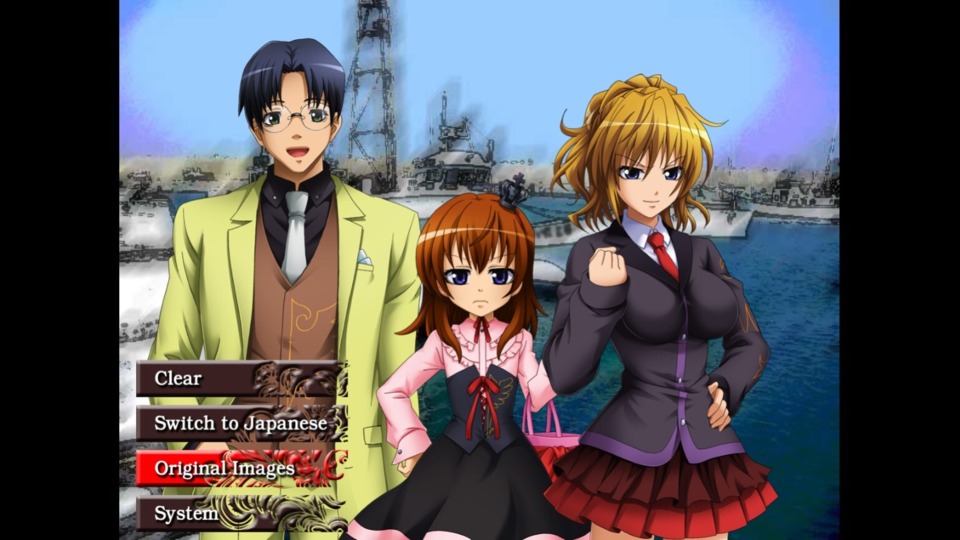
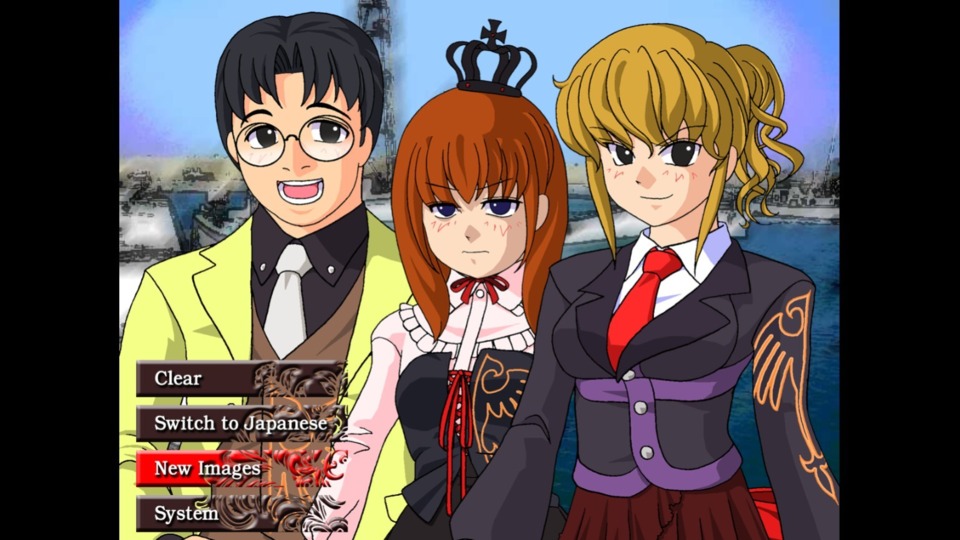
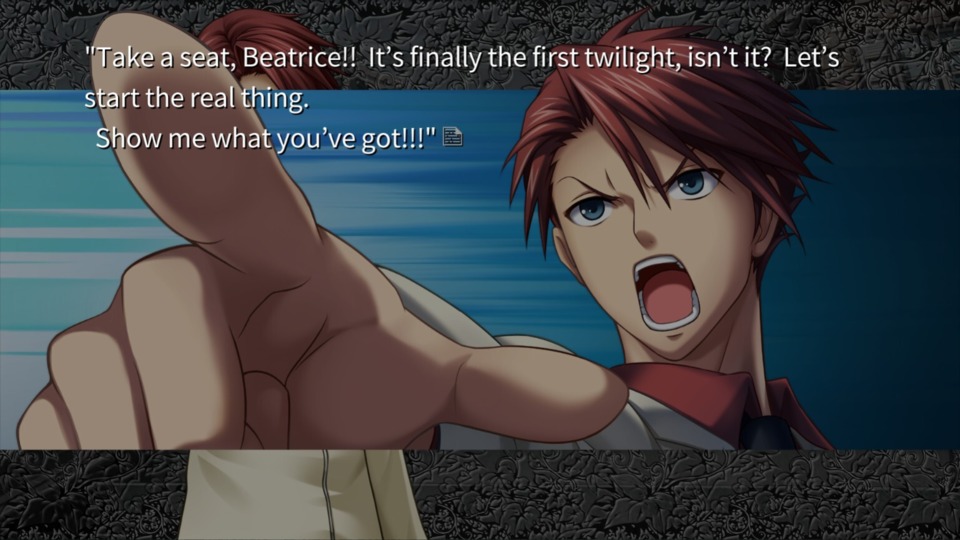
Chapter 1 Notes
Chapter 2 Notes
Chapter 3 Notes
Chapter 4 Notes
Character Study
Eh, I'll do one of these too. Curious to see how much my opinions will shift on the main 18(+) whenever I get to the second half of the game.
The final chapter of Question Arcs concludes with Beatrice ending her little chess game by pulling the decisive power move that is negating her opponent's entire existence—one seen only once before in professional chess with the climactic match of Bobby Fischer vs. _____________ in the 1974 World Chess Championship semi-finals—ending these Arcs on what are indeed some big questions I'm sure the next four chapters will have to spend some time answering.
Why do I get the sinking feeling that the response to this from people who have played the whole thing is "you haven't seen anything yet"...?
Night Cascades
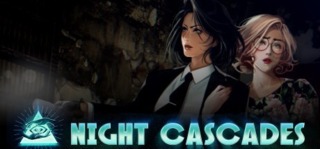
- Hanako Games / Hanako Games
- Completed 26/11
Night Cascades is a mystery crime thriller VN released just last year from Hanako Games, best known (at least by me) for the "all roads lead to death" decisions simulator Long Live the Queen. Set in the southern United States in the 1980s, at the height of the Satanic Panic, it follows two protagonists: Diane, a substitute teacher by day and a fantasy novellist by... I guess other days; and Jackie, a detective who turned a rebellious childhood full of misdemeanors into a career working on the other side of the law. The two are invited to work together on a series of arson cases involving occult symbology—Diane has an academic background in folklore and mythology, and is brought in as a consultant—with the pair investigating crime scenes and interrogating possible suspects. The one small snag is that they already have history together: they dated in college until Jackie suddenly broke things off.
So, yes, I'm back on my girls' love VN bullshit. This was a recurring theme back in May too, and my only defense is that I keep picking these things up incidentally through bundles. The ones in May were from those huge Itch.io charity bundles, while this was something I picked up in a Fanatical VN bundle with a few others I was hoping to exhibit in this feature. This excuse already has "the lady doth protest too much, methinks" energy all over it but I swear it's a coincidence. Anyway, the romance aspect is not just a small part of this VN: this central relationship, or rather the frosty shambling corpse of same, is a major element of friction between the two women that is slowly unraveled and restructured as the game continues, making it a bit more significant to the narrative than just a subplot. If anything, the amount of misdirection and hurt feelings involved in their backstory makes it as much of a twisty plot than the crime case itself. Speaking of which, the main case proceeds with very little input from the player; however, while this isn't an adventure game in the classic sense, the game does still have you investigate scenes for clues and at one point has you try to guess who you believe the culprit(s) might be from some multiple choice prompts (the only ones of its type in the whole game; no story branching going on here that I can tell). The hinted-at supernatural aspects meanwhile are... light. The various magical symbols are not treated in-game with a whole lot of seriousness, but the possibility of there being something arcane afoot is not entirely absent either.
It's a light read at around four or five hours, set across four days during which the viewpoint role switches from Diane to Jackie to Diane to Jackie, providing the player both their individual insights on the case based on their respective backgrounds as well as their own takes on how their old relationship went sour and why. Diane's chapters have a mini-game where you investigate all the hotspots of a crime scene for hints, while Jackie's is this tad more abstract hot-and-cold "find the hidden Illuminati symbol" task where you just click around the screen and follow concentric circles to where they're the most concentrated. I hesitate to call these things mini-games even, but they serve as a means of breaking up the usual walls of text of dialogue and inner thoughts of the current viewpoint character. I'll say also that the visuals and music are generally excellent: though the interface can be a bit rudimentary (the game was made in Ren'py, a popular budget text adventure game creator) the rest of the presentation had a very professional sheen to it. The event CGs—static images used for special scenes—were particularly slick. Definitely a whole lot lighter than Long Live the Queen, both mechanically and tonally, but a pleasant enough yarn for those with a crime procedural (or GL) predilection and certainly much easier to digest than anything above.
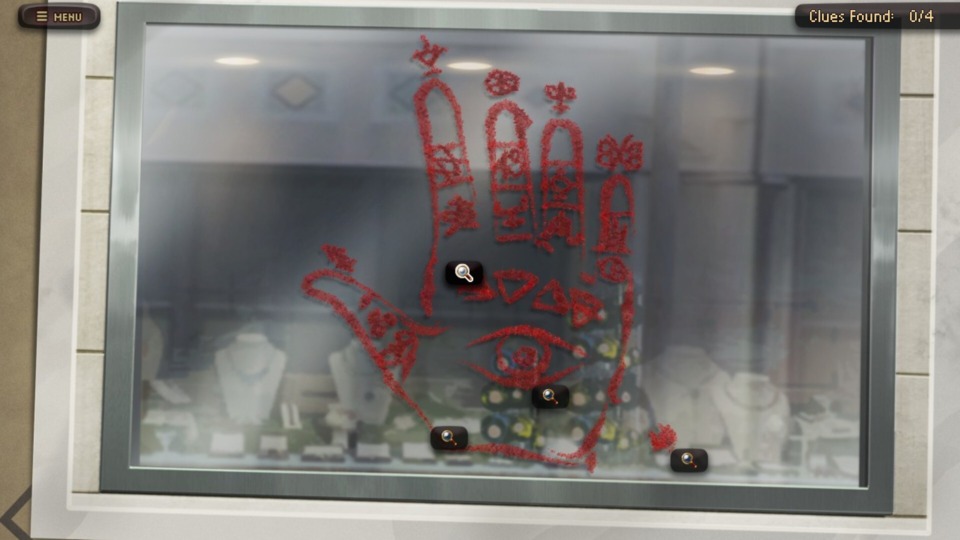
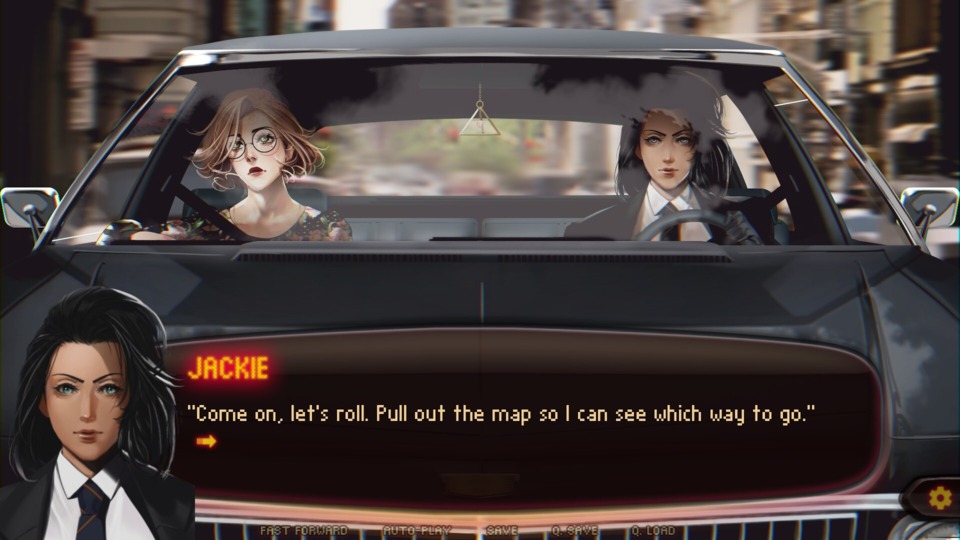
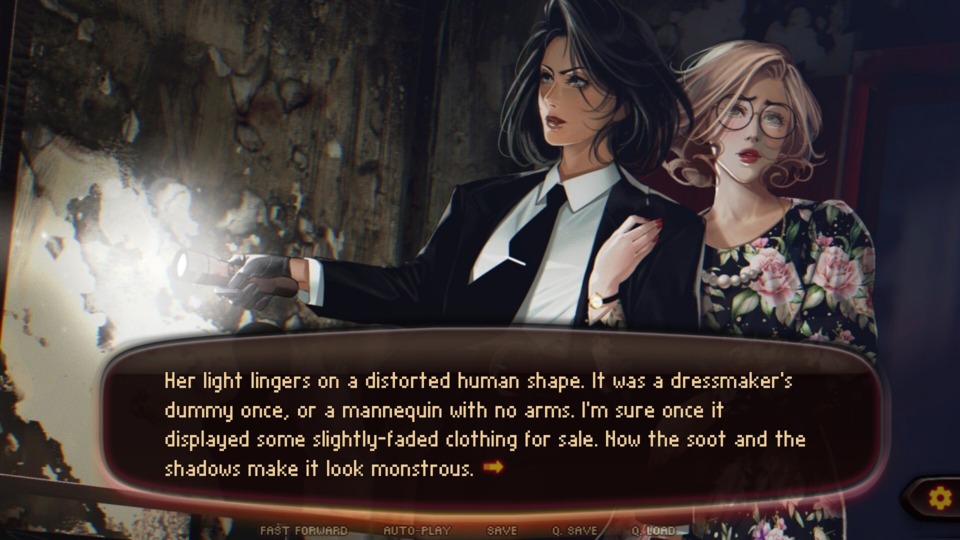
Perfect Gold
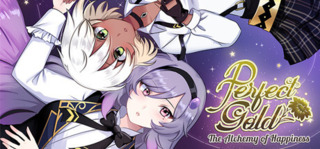
- Yangyang Mobile / Yangyang Mobile
- Completed 27/11
Perfect Gold is a fantasy romance VN set in the magical city of Castlecoast, a place where alchemists occupy the upper class due to their ability to create vast amounts of gold and other magic-users, such as elemental mages and healers, are relegated to lower tiers of society. At the prestigious LaFey Academy, two students and former friends conspire to ditch detention to hit the annual Sunflower Festival: one is the class representative and a prim alchemy prodigy from a famous family who secretly longs for a different life, while the other is a rebellious elemental mage with a talent for fire magic who feels lost in Castlecoast after moving north from a friendlier provincial village and hopes to reconnect with a distant, celebrity sister. Though the two were close to becoming more than friends just a year prior during the previous Sunflower Festival something caused a rift between the two and now they're little more than bickering enemies and rivals, though with the events that follow and some deeper introspections they might yet rekindle what was once lost. Also they're both girls. Whoops. (At this point I realize I'm just taking the piss.)
Structurally, though certainly not thematically, the game isn't too dissimilar from Night Cascades. The game has an achronological approach to storytelling where it explores two points in time for the primary characters' relationship, working up to how a hopeful pairing suddenly went awry in the past and how that same fractured reacquaintance in the present is getting glued back together after the duo have had time to clear the air and ruminate on what went wrong. It also uses Night Cascades's approach in alternating protagonists every chapter to give us a glimpse into each of their interiorities and feelings for the other person, letting us know in no uncertain terms who messed up where and why and how this unexpected reunion is affecting the pair. However, Perfect Gold is much less focused on plotting and dramatic twists: it's simply a character study, or perhaps a relationship study, between two dumb kids who needed to sort out their drama and insecurities a bit before they could commit to what they actually wanted.
Perfect Gold is even briefer than Night Cascades at a svelte 90 minutes. It does, however, have a bit more of an interactive aspect to its branching storyline structure albeit still only a wisp of one: at several dozen points in the story you have the option of two dialogue responses, one of which is considered more empathetic or romantic than the other. By choosing enough of these positive responses the player is entreated to a slightly extended epilogue ending, though there are often distinct CGs and other developments to be seen even in the "lesser" choices. There's not really enough deviation to necessitate two full playthroughs—I had the "skip all read text" toggle on in the second run, and it whizzed past at least 95% of the game—but I guess it works as a minor test of the player's emotional intelligence. I went full aromantic the first time just to amuse myself but the ending was still the same, just without the bonus coda. This game comes to us courtesy of Yangyang Mobile, a Filipino developer whom I last encountered in the previous VN-ese Waltz: they also developed the 2017 horror VN The Letter (which I reviewed here and here). As with that game, you get some pretty decent character and background art as well as full voice-acting: the VAs are not bad at all, giving Audrey (the rich alchemist girl) a well-to-do British accent and Marion (the rough-and-tumble elementalist) an American one to create a more overt distinction in their backdrops. Perfect Gold might be an even slighter piece of fluff than anything else I've played this month but it's still real cute. If you're into GL stuff, that is. Which I'm... uh...
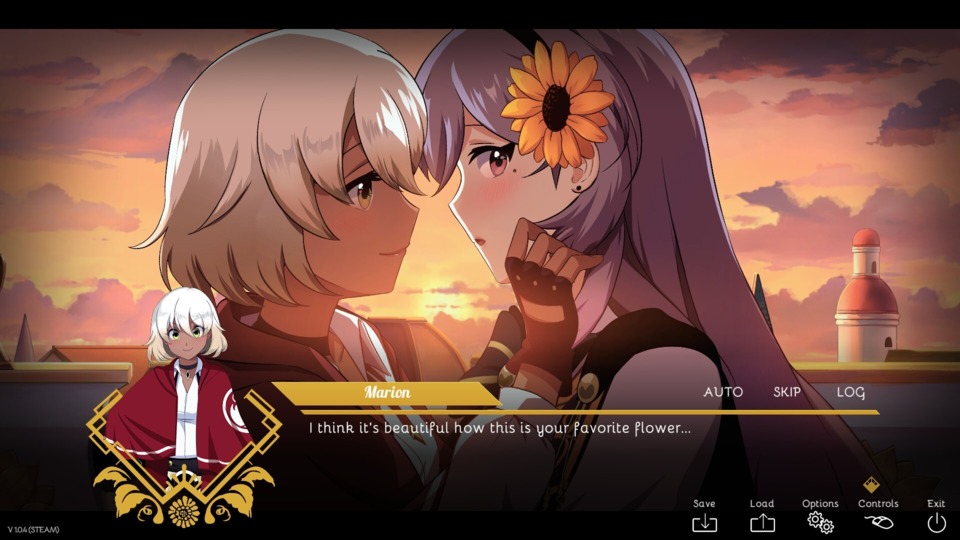
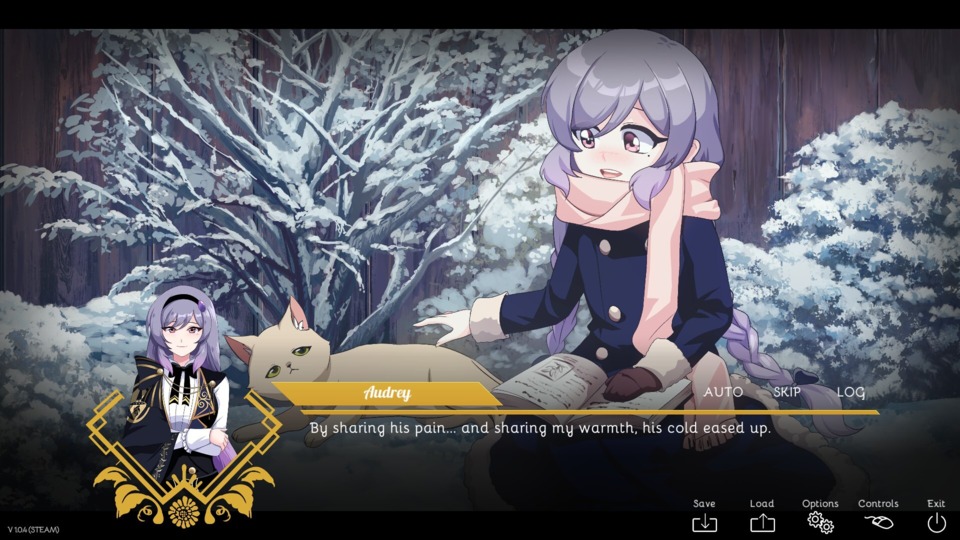
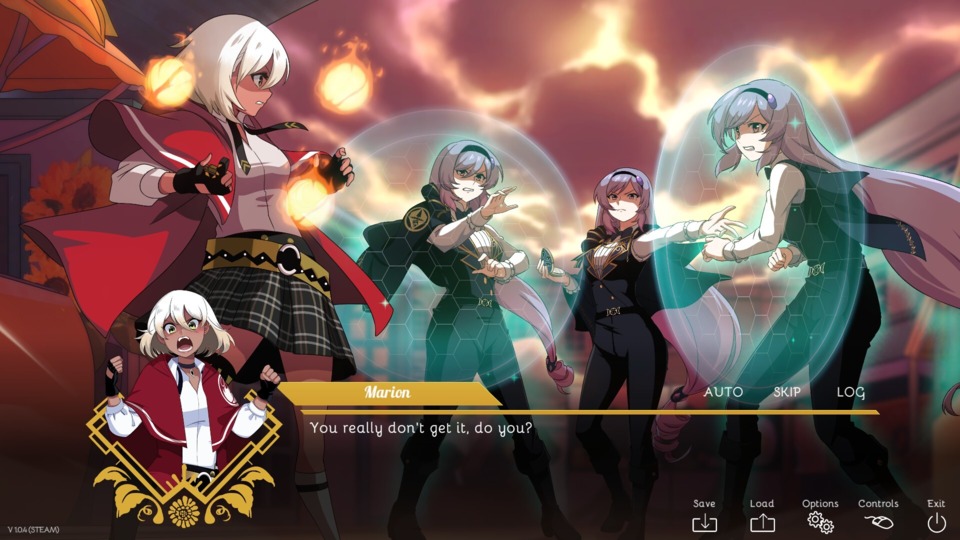
Hey! Would you look at that! I'm out of VNs for this month. That's going to do this for this season of VN-ese Waltz, but I'll start stockpiling VNs for the next one in a year or two. If I play the next Umineko before then, I'll be sure to write a bonus thing for it since I know some weirdos will be waiting for me to correct all my misconceptions when it turns out to all be aliens or something. Either way, thanks for reading. Just, in general. It's what makes this whole talky-picturey visual novel cottage industry tick.
